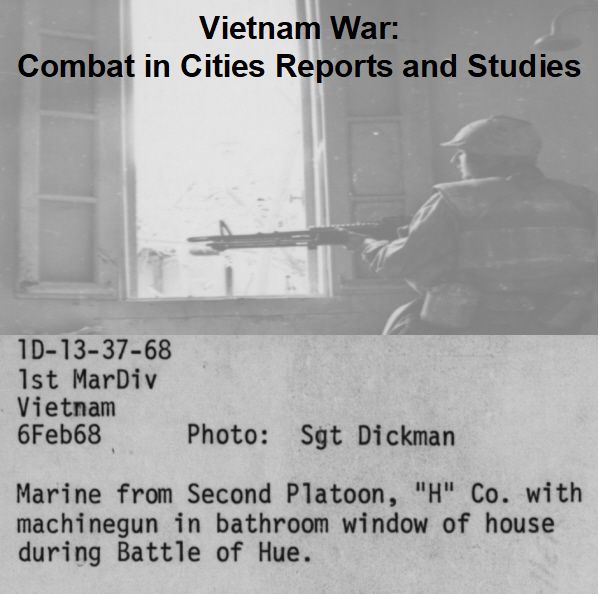
Description
Urban Warfare Studies: Timeline and Key Figures
Early to Mid-20th Century (Pre-1968):
- World War II (Various locations, e.g., Europe, Pacific, Aachen 1944): Urban conflict examples from this period are extensively studied in “Combat in Cities Report Volumes I, II & III” (1972), “Block by Block – the Challenges of Urban Operations” (2003), and “Breaking the Mold: Tanks in the Cities” (2006) to identify general principles, weapon capabilities, and lessons learned for urban warfare.
- Post-War European Uprisings (Against the Soviet Union): Examined in “Combat in Cities Report Volumes I, II & III” (1972) for insights into urban conflict.
- Korean Conflict (Battle for Seoul): Studied in “Combat in Cities Report Volumes I, II & III” (1972) as a significant example of urban combat.
- Last Decade (Pre-1972) in the United States: Urban unrest and civil disturbances in the U.S. are examined in “Combat in Cities Report Volumes I, II & III” (1972) to understand the lower end of the combat in cities spectrum.
1968:
- Hue City, Vietnam (Battle for Hue): This pivotal urban battle serves as a key case study in several works:
- “Combat in Cities Report Volumes I, II & III” (1972) uses it as a “recent battle.”
- “Shaping the Battlespace to Win the Street Fight” (2000) dedicates a significant section to “HUE CITY Vietnam (1968),” covering strategic setting, campaign analysis, execution, and lessons learned.
- “Block by Block – the Challenges of Urban Operations” (2003) includes a dedicated study, “The Battle for Hue, 1968,” by James H. Willbanks.
- “Breaking the Mold: Tanks in the Cities” (2006) examines combat related to Hue City, specifically regarding the use of tanks.
- Saigon, Vietnam (Battle for Saigon): Also cited as a “recent battle” in “Combat in Cities Report Volumes I, II & III” (1972).
1972:
- Publication of “Combat in Cities Report Volumes I, II & III”: Produced by the United States Army Infantry School, this 445-page collection aims to validate and expand existing combat in cities doctrine. It draws on historical examples from WWII, post-war Europe, Korea, Vietnam (Saigon and Hue), and U.S. civil disturbances. Volume III specifically details infantry weapons in urban fighting.
1973:
- Publication of “Combat in Built-up Areas Handbook”: A 91-page handbook published by the United States Army Infantry School. Its purpose is to assist in training individual soldiers in urban combat techniques, covering aspects like building entry, grenade use, search party techniques, firing positions, movement, anti-armor defense, and demolitions.
1992-1994:
- Operation Restore Hope in Somalia: This conflict is covered in “Shaping the Battlespace to Win the Street Fight” (2000) as a case study for urban fighting aspects.
1994-1996:
- Russia’s Campaign for Chechnya (including Grozny): This conflict is analyzed in “Shaping the Battlespace to Win the Street Fight” (2000) and “Block by Block – the Challenges of Urban Operations” (2003) (specifically “Russian attempts to subdue Chechen fighters in Grozny”) for lessons on urban combat.
Late 20th Century (Pre-2000):
- Sarajevo, Serbia (Serbian siege): Included as a case study in “Block by Block – the Challenges of Urban Operations” (2003) for its insights into urban operations.
2000:
- Publication of “Shaping the Battlespace to Win the Street Fight”: A 194-page Master of Military Studies thesis by Major Norman Lee Cooling, USMC, produced at the United States Marine Corps Command and Staff College. This study covers urban fighting in Hue City (1968), Somalia (1992-1994), and Chechnya (1994-1996), focusing on operational-level considerations for urban environments.
2003:
- Publication of “Block by Block – the Challenges of Urban Operations”: This 481-page anthology on the history of urban combat includes a specific study on the Battle of Hue (1968) by James H. Willbanks. It covers urban operations from ancient times to the mid-20th century, and then details ten specific case studies including WWII (U.S., German, Japanese operations), Grozny, and Sarajevo.
2004:
- Fallujah: Included as a case study in “Breaking the Mold: Tanks in the Cities” (2006) regarding the use of tanks in urban warfare.
2006:
- Publication of “Breaking the Mold: Tanks in the Cities”: A 146-page monograph by Kendall D. Gott, published by the Combat Studies Institute Press. This work examines the use of tanks in urban warfare, including a case study on Hue City, Vietnam, and Fallujah (2004).
Cast of Characters
The sources primarily mention authors and institutions responsible for producing military studies and reports, rather than individuals directly involved in the historical battles themselves.
- United States Army Infantry School:
- Role: An institutional body responsible for producing foundational military doctrine and training materials.
- Bio: Authored and published “Combat in Cities Report Volumes I, II & III” (1972) and “Combat in Built-up Areas Handbook” (1973). These publications are central to the study of urban warfare doctrine, offering historical analysis and practical guidance for soldiers.
- Major Norman Lee Cooling, USMC:
- Role: Author of a Master of Military Studies thesis.
- Bio: Authored “Shaping the Battlespace to Win the Street Fight” (2000) at the United States Marine Corps Command and Staff College. His work focuses on identifying operational-level considerations unique to urban environments, drawing on case studies like Hue City, Somalia, and Chechnya.
- James H. Willbanks, Lieutenant Colonel, U.S. Army, Retired:
- Role: Professor of joint and multinational operations at the U.S. Army Command and General Staff College, and author of a specific study.
- Bio: Contributed “The Battle for Hue, 1968” to the anthology “Block by Block – the Challenges of Urban Operations” (2003). His expertise lies in analyzing historical military operations, particularly significant urban battles, for contemporary lessons.
- Kendall D. Gott:
- Role: Author of a military monograph.
- Bio: Authored “Breaking the Mold: Tanks in the Cities” (2006), published by the Combat Studies Institute Press. His work critically examines the effectiveness and challenges of employing tanks in urban warfare, using historical case studies such as Hue City and Fallujah.
Vietnam War: Combat in Cities Reports and Studies
This collection includes 1,250 pages material. The reports and studies include:
Combat in Cities Report Volumes I, II & III (1972)
445 pages of studies, reports and instruction concerning combat in cities and built-up areas, produced in 1972 by the United States Army Infantry School.
Volume I & II
Abstract: The purpose of this study was to validate and expand existing combat in cities doctrine by identifying voids and weaknesses for the promulgation of doctrinal changes applicable throughout the spectrum of urban warfare. The report group considered urban conflict in Europe and the Pacific during World War II, post-war European uprisings against the Soviet Union, the battle for Seoul during the Korean conflict, and the recent battles for Saigon and Hue. On the lower end of the combat in cities spectrum, the urban unrest and the attendant civil disturbances that have occurred in the United States during the last decade were examined.
Volume III
Abstract: This annex describes historical examples concerning the use of infantry weapons in city fighting and the characteristics and capabilities of current infantry weapons when employed in combat cities. Each type of infantry weapon is covered in detail in this annex, to include description, characteristics, technique of fire, maintenance methods, problems, and tips on training and specific guidance for fighting with these weapons in built-up areas. This annex also outlines penetration data on most infantry weapons and their ammunition when employed against various types of targets and material found in city fighting.
The first chapter of this annex contains extracts from historical documents showing examples of the weapons and techniques used and some capabilities and limitations of these weapons in fighting 1n cities and built-up areas from World War II through the present-day fighting in Vietnam. Some of the extracts exhibit weapons which are not in the Army’s current inventory of weapons; however, they give the reader insight in the use of today’s sophisticated weapons.
Combat in Built-up Areas Handbook (1973)
A 91-page handbook published in 1973 by the United States Army Infantry School.
Abstract: Successful combat operations in a built-up area depend heavily upon the proper employment of the rifle squad. The squad itself is successful only when each and every member of the squad is skilled in the techniques of combat in built-up areas. The training in these techniques is the responsibility of all leaders. The purpose of this booklet is to assist you in developing a program by which to train the individual soldier in the tactics and techniques of combat in built-up areas. The instruction outlined in this booklet is designed to be conducted at individual stations each concerned with an isolated technique peculiar to fighting in built-up areas. Instructional areas include: methods of building entry, top and lower level; use of hand grenades; search party techniques selection of firing positions, both individual and crew-served; techniques of movement; defense against armor; weapons effects and capabilities or boobytraps; use of demolitions and a tactical exercise.
Shaping the Battlespace to Win the Street Fight (2000)
A 194-page master of military studies thesis by Major Norman Lee Cooling, USMC, produced at the United States Marine Corps Command and Staff College, Marine Corps University, Quantico, VA.
This study covers the urban fighting aspects of three conflicts, HUE CITY Vietnam (1968), Operation Restore Hope in Somalia (1992-1994), and Russia’s Campaign for Chechnya (1994-1996).
The section on Hue City covers the subjects Strategic Setting, Conflict History, Analyzing the American Campaign Plan, Analyzing the North Vietnamese Campaign Plan, Campaign Execution, Operational Level Assessment, Command & Control, Intelligence, Maneuver, Fires, Logistics, Force Protection, and Lessons Learned.
Abstract: The preponderance of recent national security studies all describe an emerging threat that will increasingly require regional Commanders-in-Chiefs (CinCs) to meet challenges across the spectrum of conflict while operating within the world’s cities. Yet, all current doctrine concerning urban warfare deals almost exclusively with high intensity operations that are part of a “Fulda Gap style” major theater war. Moreover, this doctrine tends to address urban warfare solely at the tactical level, apparently assuming that no operational level differences exist between urban operations and those in other environments. Last year, the Department of Defense designated the Marine Corps as the lead service for the development of joint doctrine for urban operations. I began this monograph in hopes of assisting with this effort by identifying potential operational level considerations that are unique to, or are of enhanced importance in, the urban environment. I found that while many of the operational considerations for urban conflict are the same as those for other physical environments, the unique nature of cities requires joint force commanders to consider a number of special factors while planning and conducting urban operations.
Block by Block – the Challenges of Urban Operations (2003)
An anthology on the history of urban combat, including a study on the Battle of Hue 1968. The study on Hue, “The Battle for Hue, 1968,” is by James H. Willbanks, Lieutenant Colonel, U.S. Army, Retired, professor of joint and multinational operations at the U.S. Army Command and General Staff College.
This 481-page book begins with a general overview of urban operations from ancient times to the midpoint of the twentieth century. It then details ten specific case studies of U.S., German, and Japanese operations in cities during World War II and ends with more recent Russian attempts to subdue Chechen fighters in Grozny and the Serbian siege of Sarajevo. Operations range across the spectrum from combat to humanitarian and disaster relief. Each chapter contains a narrative account of a designated operation, identifying and analyzing the lessons that remain relevant today.
Breaking the Mold: Tanks in the Cities (2006)
A 146-page monograph by Kendall D. Gott, published by the Combat Studies Institute Press, Fort Leavenworth, Kansas. This work examines the use of tanks in urban warfare. One of the case studies covers the combat related to Hue City, Vietnam.
Abstract: (This work) seeks to provide insight and a historical precedence on the wisdom of employing tanks in an inherently dangerous dimension of the modern battlefield, intensifying the shortcomings in technological design and the lack of crew training for city fighting. The case studies in this monograph are high-intensity battles in conflicts ranging from limited interventions to major combat operations. From Aachen in 1944 to Fallujah in 2004, the absolute need for specialized training and the use of combined arms at the lowest tactical levels are two of the most salient lessons that emerge from this study.
Related products
-
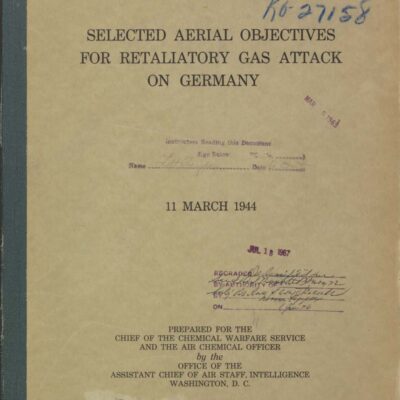
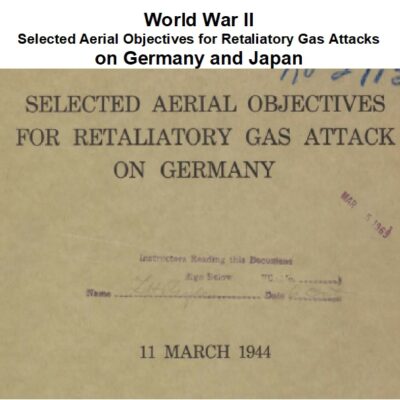
World War II: Targeted Aerial Objectives for Retaliatory Gas Attacks on Germany and Japan
$3.94 Add to Cart -
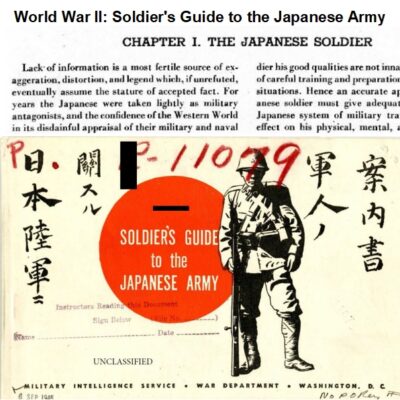

World War II: A Soldier’s Handbook on the Japanese Army
$3.94 Add to Cart -

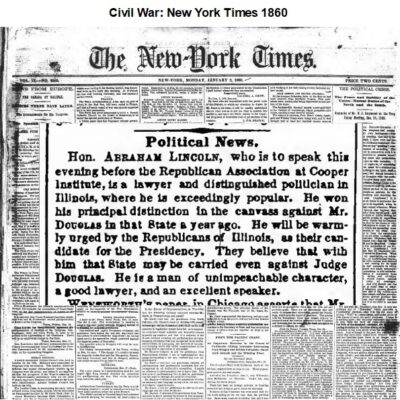
Civil War: New York Times 1860
$9.90 Add to Cart -
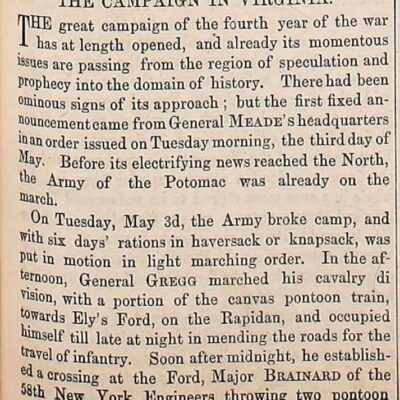
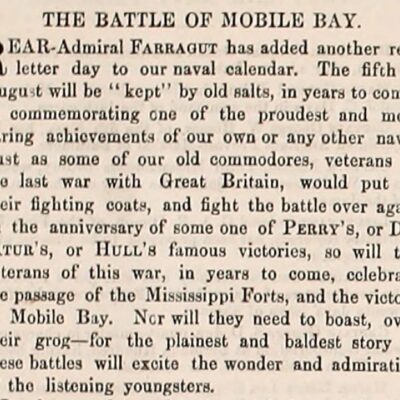
Civil War: Army Navy Journal & Gazette Volume 1 (1863 – 1864)
$19.50 Add to Cart